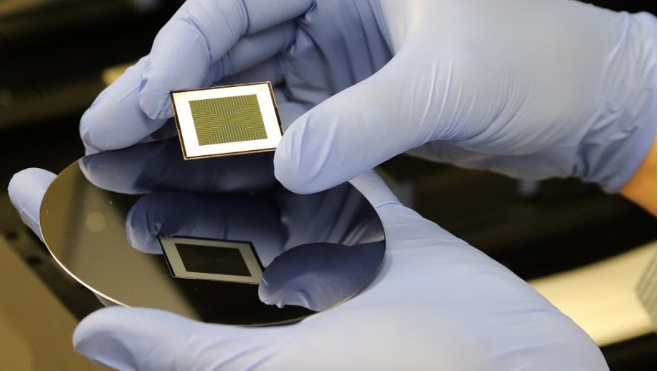Scientists at The Australian National University (ANU) in Canberra have produced a dual-sided silicon solar cell with a front conversion efficiency of 24.3% and a rear conversion efficiency of 23.4%, representing a bifacial factor of 96.3%. They claimed that the performance represents an effective power output of approximately 29%.
Chief researcher Dr. Marco Ernst claimed that the numbers outstrip the performance of the best single-sided silicon solar cell. “This is a world record for selectively laser-doped solar cells and among the highest-efficiency bifacial solar cells,” Ernst said.
The results, which the research team claims have been independently verified by the Commonwealth Scientific and Industrial Research Organisation (CSIRO), were achieved by using specific laser-doping technology to fabricate the cells.
“Laser-doping uses lasers to locally increase electrical conductivity,” Ernst said. “It is a low-cost, industry-compatible process for boosting solar cell efficiency.”
Principal researcher Dr. Kean Chern Fong claimed that the bifacial solar cells easily beat the performance of single-sided silicon solar cells and provide efficiency benefits for solar PV projects.
Bifacial solar cells, which are commanding a growing share of the PV market, absorb light from both the front and rear surfaces of the device, capturing albedo light reflected off the ground and roof surfaces that would otherwise be lost.
“We have developed what I would call a true bifacial solar cell, as it has nearly symmetrical power generation capacity on both surfaces of the device,” Fong said. “When deployed on a conventional solar farm, a bifacial cell absorbs direct incoming light, while also taking advantage of ground reflection, which can contribute up to additional 30% power generation. Bifacial solar cells are becoming increasingly important in the roll out of solar farms and are expected to have a market share of over 50% in the next five years. Our work demonstrates the incredible capabilities of this technology.”
The results are the latest milestone for scientists at ANU, which received AUD 3.6 million ($2.6 million) in funding from the Australian Renewable Energy Agency (ARENA) in January as part of the Australian Centre for Advanced Photovoltaics Infrastructure project.
Earlier this month, scientists working on the PV potential of ultra-thin 2D materials discovered that the ability of the materials to generate solar energy can be controlled by “twisting” the angle between two layers of the material.






